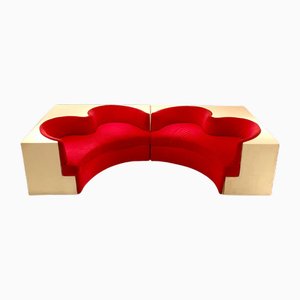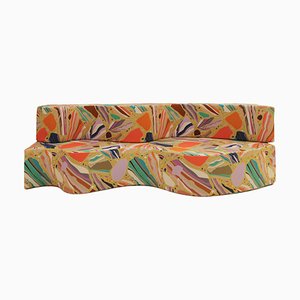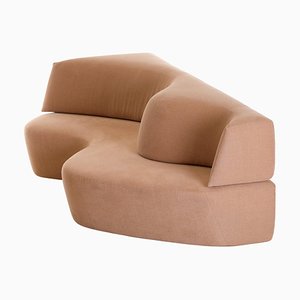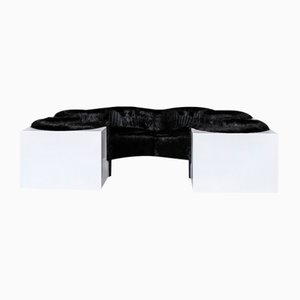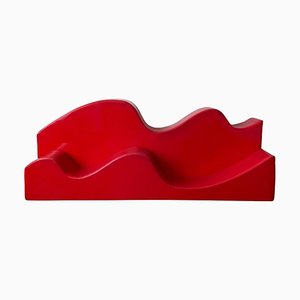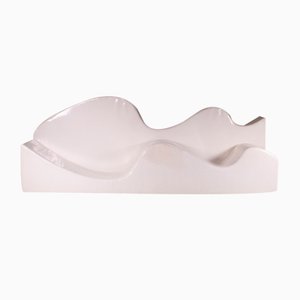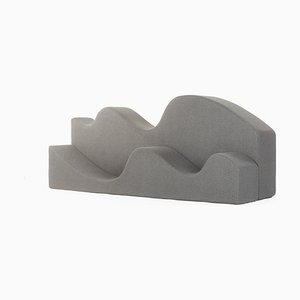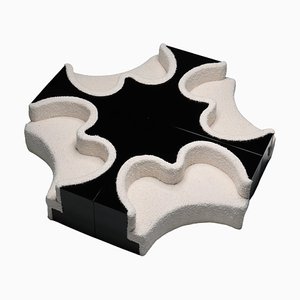
Italian radical design collective Archizoom Associati was founded in Florence in 1966. Adopting an attitude of design vigilantism, their work critiqued modernism and its inherent propensity to promote consumerist, style-driven societies.
Archizoom’s founding members—Andrea Branzi (b. 1938), Gilberto Corretti (b. 1941), Paolo Deganello (b. 1940), and Massimo Morozzi (1941-2014), with designers Dario and Lucia Bartolini joining in 1968—met while studying at the Faculty of Architecture at the University of Florence; these years in Italy (and beyond) were marked by an economic downturn, housing shortages, and governmental fumbling.
According to legend, the young architects of Florence were stirred to action by the course Spazio di coinvolgimento (Space of Involvement), taught by Leonardo Savioli, which criticized the psychological, social, and spiritual alienation endemic in the design of modern cities. Other radical, anti-design groups were spawned from Savioli’s class as well, including 9999, Superstudio, UFO, and Zziggurat. And all of these Italian groups also found inspiration in the work of neofuturist British architectural collective Archigram, as well as international representations of Pop Art.
Archizoom initially came to prominence through a pair of anti-consumerist exhibitions entitled Superarchitettura, organized in collaboration with Superstudio, first in Pistoia in 1966 and again in Modena in 1967. The following year, Archizoom participated the iconoclastic exhibition Centro di Cospirazione Eclettica at Milan’s Triennale and designed a series of theoretically driven gazebos that were published in Ettore Sottsass’s Pianeta Fresco magazine.
Archizoom’s most enduring and influential contribution to the anti-design movement was their 1969 No Stop City, an ironic urban plan for an artificially lit, air-conditioned, infinite city that takes modernist ideology to its logical extreme.
Archizoom was also invited to participate in the landmark 1972 Italy: The New Domestic Landscape at New York’s Museum of Modern Art. For this era-defining exhibition, the Archizoom installed Gray Room—a featureless environment animated only by a woman’s voice describing a beautiful, colorful house—alongside the work of other Italian visionaries like 9999, Gae Aulenti, Mario Bellini, Joe Colombo, Gruppo Strum, Ugo La Pietra, Gaetano Pesce, Alberto Rosselli, Ettore Sottsass, and Marco Zanuso with Richard Sapper.
Before they disbanded in 1974, and the individual members went on to pursue separate careers, Archizoom designed a range of iconic pieces for Poltronova: Superonda Sofa (1966), Safari Sofa (1966-7), Dream Bed (1967), and Mies Armchair (1969).
* Images courtesy of Centro Studi Poltronova, Graham Foundation, and Frac Centre

